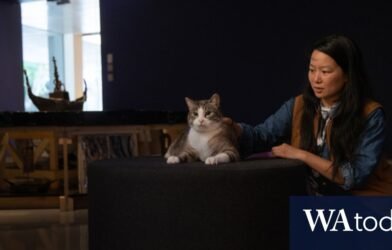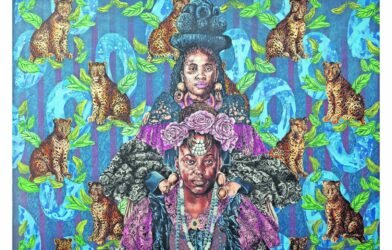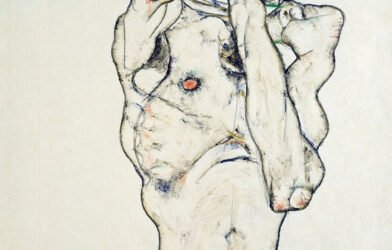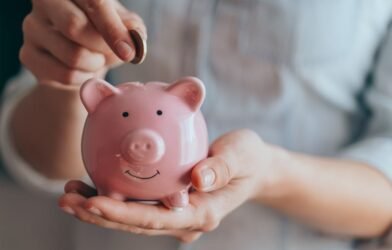Changing hands for up to $550,000, these coins embody one of the quirkiest stories about the evolution of Australia’s financial system.
When the colony was new and chaotic, citizens paid for goods and services with all kinds of coins from around the world.
Change was often received in the form of promissory notes, which were laboriously written out and could be handed over by the recipient for their next purchase.
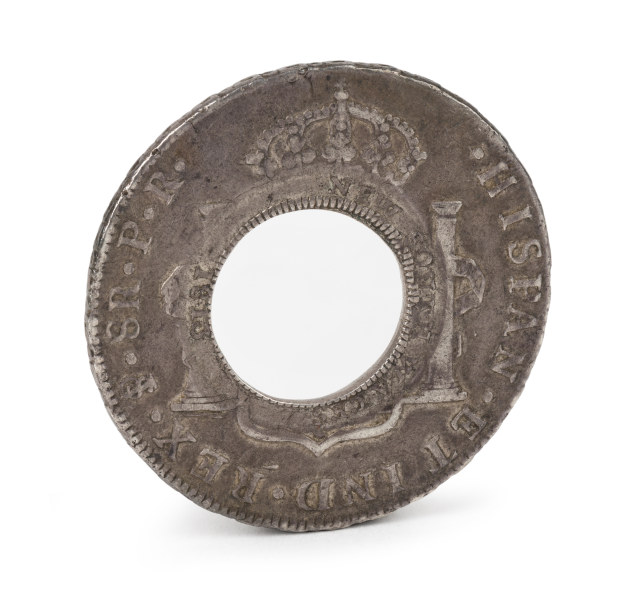
This rare 1813 five-shilling coin, known as a “holey dollar”, is estimated to fetch between $200,000 and $250,000 through Leski Auctions on June 30.
There was no such thing as a local currency, nothing was standardised, and confusion reigned. All this made it hard for business to occur, let alone flourish, Leski said.
Governor Lachlan Macquarie’s answer was to make a new currency for the colony and, colonial NSW being what it was, he got a convicted forger to do the job.
William Henshall, who was never heard from afterwards and who Leski suspects probably turned up in another country with an assumed name, made the colony’s first currency by recycling existing coinage.
Macquarie imported 40,000 Spanish reales in 1812 and Henshall got to work on them, punching out a central disc. This created a doughnut-shaped coin called the holey dollar, and the disc called the dump. Macquarie Group’s logo honours this first, faltering step towards market regulation.
“Macquarie set the value of the holey dollar at five shillings, with 15 pence for the dump. These coins went into circulation in 1814 and were replaced with sterling coinage from 1822,” according to the National Museum.
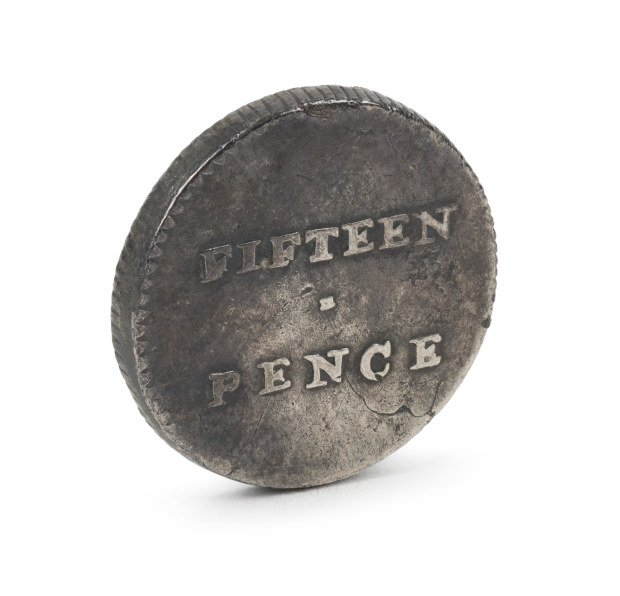
This particular ‘dump’, lot 9, was made from an existing Spanish dollar. Leski Auctions estimates it will go for between $200,000 and $250,000 on June 30.
The museum’s holey dollar is one of about 300 in existence. The top price ever paid for a holey dollar was $550,000 in 2015, Leski said. The dump has also held its own, bringing as much as a quarter of a million dollars.
“We sold one in average condition with a relatively common base coin for $165,000 last year,” Leski said.
In its forthcoming auction, Leski Auctions is offering six holey dollars and six dumps.
Even for Charles Leski, who has been trading for many decades, such a cache of colonial coins represents a collectors’ bonanza.
“We might see one holey dollar every 10 years, maybe every five years,” Leski said. “I have never had an auction with two holey dollars or dumps or both at the same time. It’s breathtaking.”
One of the stars of the catalogue is lot six, described as 1813 New South Wales Five Shillings or Holey Dollar on 1809 H.J. Mexico Mint Ferdinand VII 8 reales host coin.
Only 13 examples of the coin are believed to remain in private hands, making it extremely rare. This one is estimated at $200,000 to $250,000, and it carries a reserve of $160,000.
“I think that’s a screaming bargain,” Leski said.
The other “outstanding rarity” is lot two, Leski said. This coin is listed as 1813 New South Wales Five Shillings or Holey Dollar on 1792 P.R. Potosi Mint (Bolivia) Charles IIII 8 reales host coin.
Only 10 per cent of surviving holey dollars are struck on a host coin originating from Potosi (Bolivia), with only 14 known in private hands, the catalogue says.
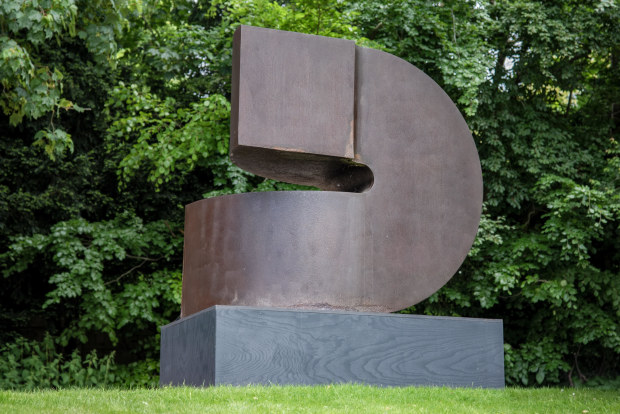
Clement Meadmore’s corten steel sculpture, Untitled, 1966, once belonged to Australian music and film producer Robert Stigwood. UK auctioneer Dreweatts will auction the work on July 11, with an estimate of £40,000 to £60,000.
The lowest estimate for the six dumps in the catalogue is $40,000 to $50,000. The highest estimate is $200,000 to $250,000 for lot nine, described in the catalogue as 1813 New South Wales Fifteen Pence or Dump.
It’s a “unique coin” with exceptional characteristics, Leski said. “People generally value the holey dollar more than the dump, but for the real scholar that number nine is the holy grail,” he said.
The sale is called The Holey Dollars and Dumps of NSW/Coins and Banknotes of Australia and the World.
Turning to other metals, Australian-born Clement Meadmore’s corten steel sculpture, Untitled, 1966, is for auction on July 11 through Dreweatts in the UK with an estimate of £40,000 to £60,000.
Australian music and film producer Robert Stigwood, who died in London in 2016, was a previous owner of the work, according to Francesca Whitham, Dreweatts’ head of sale.
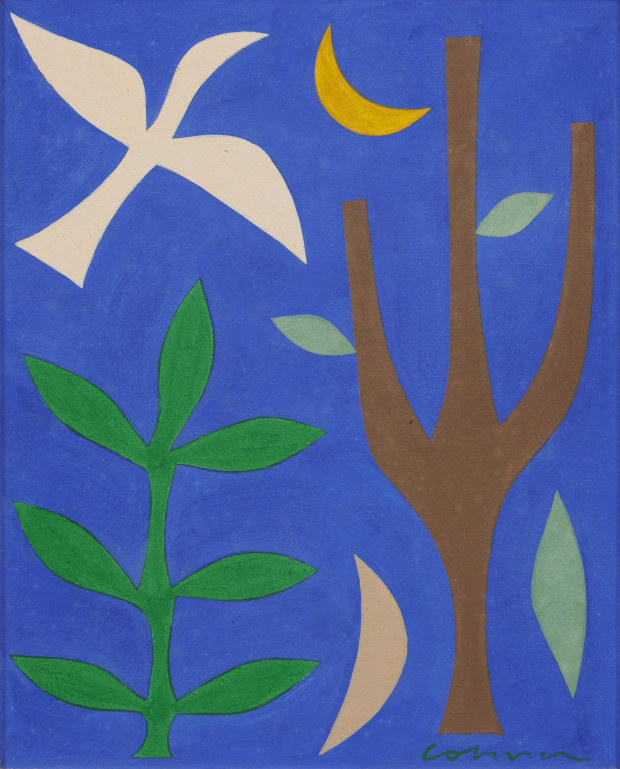
The late Sydney artist John Coburn’s gorgeous White Bird and Moon, 1975, in oil on board, was one of the top performers in Leonard Joel’s June 25 Fine Art auction in Melbourne. Estimated at between $6000 and $8000, the work fetched $15,000 including buyer’s premium.
“The [present] owner wishes to remain anonymous but the work came into their possession directly by descent from Robert Stigwood,” Whitham told Saleroom.
In fact, Untitled had quite a connection with showbiz. Before Stigwood, it was owned by Ahmet Ertegun, co-founder and president of Atlantic Records. Ertegun died in 2006 after falling during a Rolling Stones concert.
Closer to home, Leonard Joel’s Fine Art auction in Melbourne on Tuesday recorded a 65 per cent clearance rate, according to head of fine art Wiebke Brix.
Among the best results was John Coburn’s White Bird and Moon, 1975, which sold for $15,000 (including buyer’s premium, as do the sale prices below) against a pre-sale estimate of $6000 to $8000.
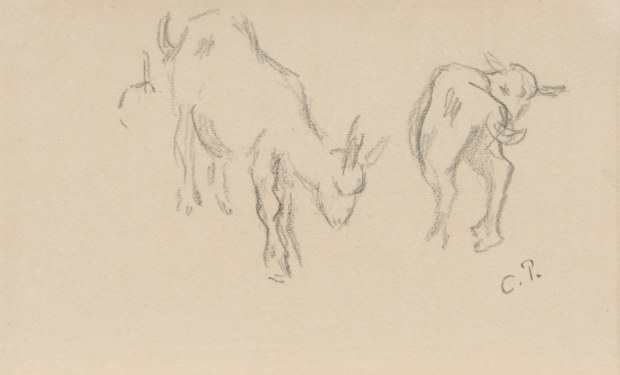
French Impressionist painter Camille Pissarro’s delightful drawing of goats was estimated at $2000 to $4000 and fetched $3000 (including buyer’s premium).
John Brack’s Nude with Chair and Carpet, 1970, in pastel on paper, fetched $42,500 against an estimate of $18,000 to $20,000.
Camille Pissarro, often dubbed the father of French Impressionism, is not automatically associated with the Australian art market, to say the least. But a very sweet pencil sketch of goats by Pissarro fetched $3000 against an estimate of $2000 to $4000 in the Leonard Joel sale.
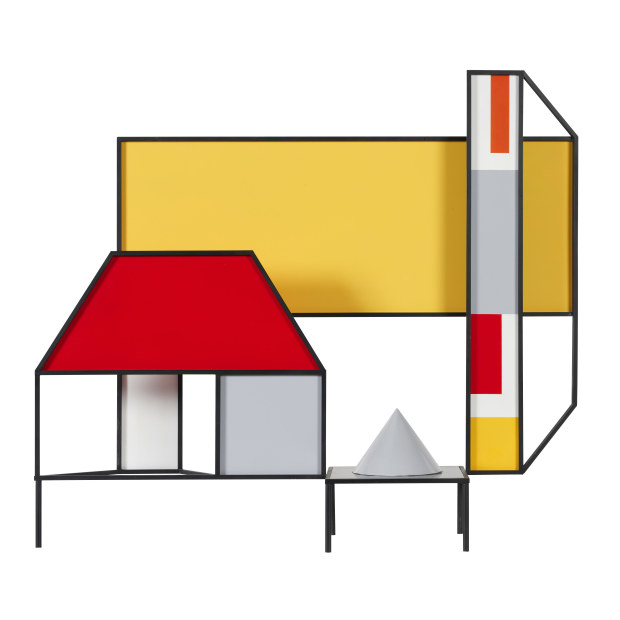
Peter D. Cole’s sculpture in painted brass, bronze and aluminium, titled Primary Composition – Kyoto, 2006, sold for $7500 (including buyer’s premium) against a pre-sale estimate of $8000 to $10,000 in Leonard Joel’s June 25 Fine Art sale in Melbourne.




